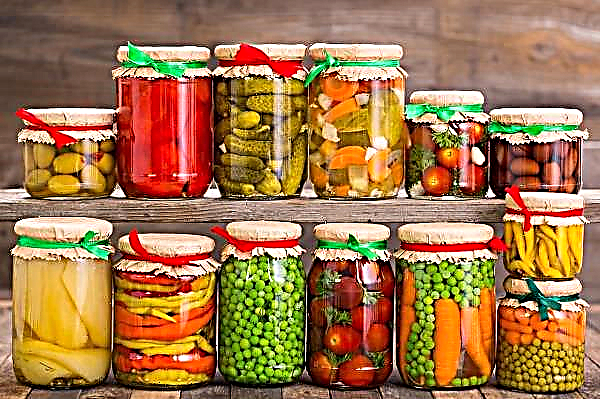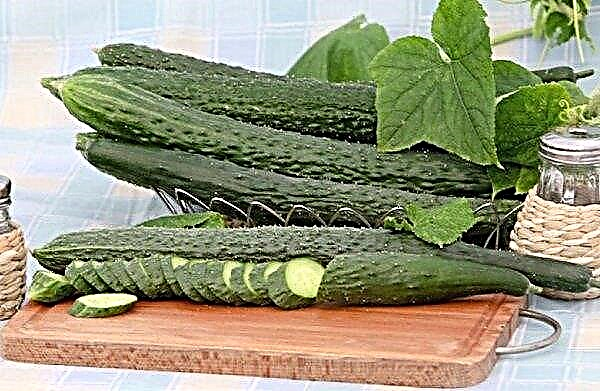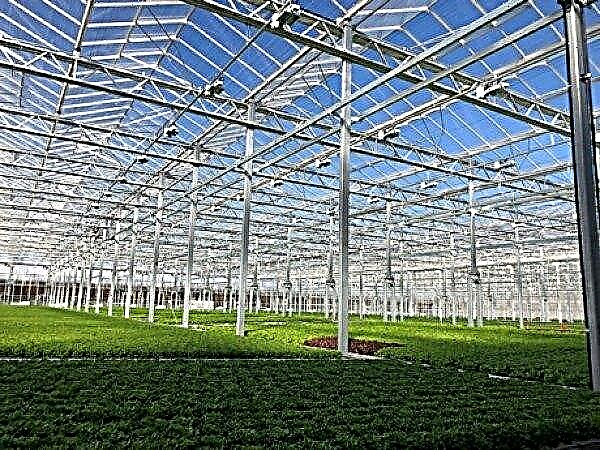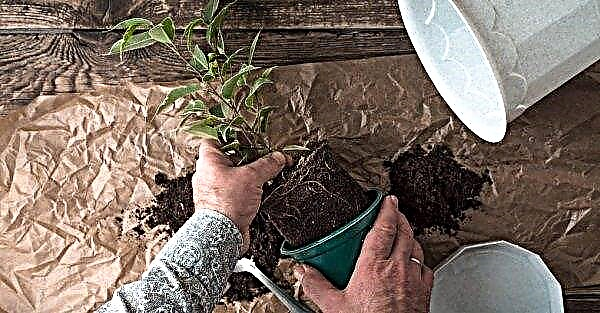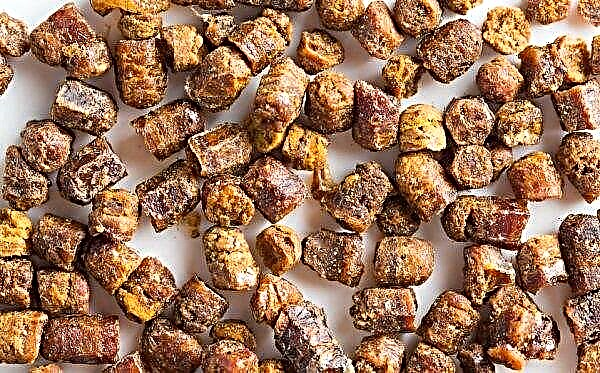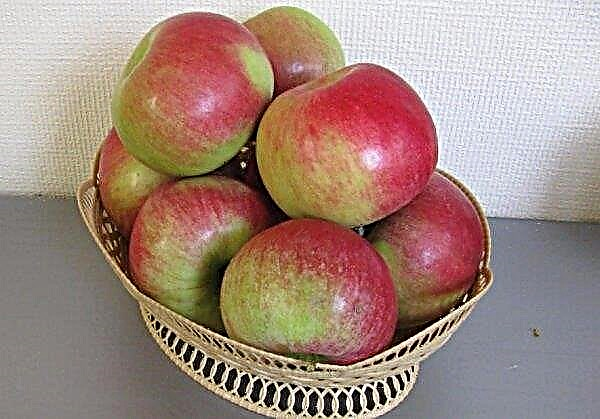Thuja is a wonderful ornamental plant, while it is unpretentious and well survives when planting in various climatic zones. The plant tolerates a haircut and quickly recovers after it. The garden, in the design of which thuja is used, looks beautiful and vibrant, since it is possible to create various shapes from it. She is able to decorate any area with her presence, creating an atmosphere of luxury, sophistication and pretentiousness. Thuja is most often a shrub, but there are some species of this plant related to trees.
Botanical tree description
Thuja belongs to the evergreen conifers. It has a conical shape and grows up to 7-10 meters and rarely forms inflorescences and cones, and if they appear, they are practically invisible. Thuja has a distinctive specific smell of needles, which cannot be confused with other aromas.
The birthplace of this evergreen tree is North America and East Asia, where it can be found as wild-growing. In nature, there are 5 species of arborvitae, while in artificial conditions, about 120 varieties of shrubs are grown. Under appropriate conditions, the bush can live up to 150 years.
Important! From the needles of thuja get essential oil, which is part of the drug, for example, for the treatment of colds and stress, or other products such as air fresheners. PTherefore, the thuja bush is grown on an industrial scale.
When is it better to plant a thuja
For cultivation in the Urals, in the Middle lane, Siberia and the Leningrad region, the Western thuja variety is perfect, as it tolerates severe winter frosts, is more resistant to winds and a sharp decrease in air temperature. It is better to plant it in the early autumn long before the first frosts, so that the sprout has time to take root.
 The best time for planting is the end of March or the beginning of April, when night frosts have already stopped and nature has begun to come to life.
The best time for planting is the end of March or the beginning of April, when night frosts have already stopped and nature has begun to come to life.
In this case, the average air temperature during the day should be from +10 to + 15 ° С, and at night it should not fall below + 5 ° С. In the southern regions, thuja is best planted in spring and the oriental appearance of this plant is ideally taken root here.
Thuja can also be planted in the summer, but not during the hot season, since very high air temperatures can cause the plant to dry out. It is important to carefully and regularly water the shrub.
Video: Features of thuja planting in spring, summer and autumn
In summer
Summer is not the best time to plant, especially in regions with a hot climate. However, if necessary, thuja can be planted in the summer, but you need to choose a cloudy or rainy day so that the plant does not quickly dry out. It is recommended to use a seedling with a closed root system grown in a pot, and planting itself in the evening.
Did you know? The name of the thuja bush comes from the Latin word for sacrifice, due to the aromatic properties of the plant, which were used during the rituals.
It is important to carefully care for the plant: the shrub should be regularly watered for at least one month after planting and fertilizer, which will enable the root system to develop well. Immediately after planting, it is advisable to shade young seedlings from the south side, using a screen made of thick paper, plywood or branches.
In the spring
The spring planting of the thuja is maximally tied to the biological clock and the life cycle of the plant, so the survival rate of the bush is quite high. Planting is best done not too early, when the night frost is already behind, but the earth is still full of moisture from melting snow.
The most optimal landing time is April. For this purpose, in spring, you can use seedlings grown in the open, which are cheaper and more affordable.
Fall
For regions with a cold climate, it is better to plant the thaw in the early autumn, which will give it the opportunity to take root and protect it from dangerous return frost in the spring, which can damage the plant. For autumn planting, air temperature + 15 ° С and high humidity are ideal.
It is important to carry out the procedure several weeks before the onset of frost, which will give the bush time to root. For autumn planting, you can choose seedlings with both open and closed root systems. The roots of only thuja planted for the winter should be covered with a special film or tyrsa.

Landing
For planting a bush, you can use purchased seedlings as well as seedlings that are grown at home from shrub seeds. It is easier for novice gardeners to take a ready-made young bush, since it has better survival rate and tolerates various adverse weather conditions.
During planting, it is recommended to spray the plant with various anti-stress medications that will prevent yellowing and drying out of thuja.
Seedlings
There are seedlings with a closed and open root system. The former are highly adaptable, but they are expensive and difficult to find, so the latter, grown in ordinary soil, are planted more often by gardeners.

It is better to plant such a plant in spring or autumn and carefully care for it. Seedlings from the pot can be planted in open ground even in the summer and at the same time they take root pretty well in any conditions.
Seat selection
For thuja, well-moistened and drained soil with the addition of sand and peat is best. It is recommended to choose the shaded north side of the garden or plant a plant under the crown of a large tree so that the light gets into the bush in a diffuse form.
This is due to the fact that the thuja does not tolerate direct sunlight and can easily dry out. An important point when choosing a place to plant is the presence of a groundwater plant nearby, because the thuja is not able to create a powerful root system and it requires a constant supply of a large amount of moisture.
Soil preparation
Before planting, it is necessary to create the necessary conditions for the growth of a seedling, therefore, with the soil, such actions are carried out:
- Weed control along with roots.
- Loosening of the surface, which is carried out with a rake.
- Treatment with insecticides such as Acrophyte or Actellic.
- Mulching.
- The introduction of nitrogen and phosphorus fertilizers to increase the amount of green mass and increase the resistance of the seedling to diseases and pests.

Pit creation
The deepening in the soil for the planting of thuja depends on the size of the root system of the plant, which should completely fit in the pit. The distance between plants should be at least 1.5 meters.
500-700 grams of compost fertilizer is placed on the bottom of the well before planting, which will allow the thuja to receive a huge amount of nutrients from the soil immediately after rooting. Also, 2-3 liters of water are poured into the pit.
Planting a plant
Immediately before planting, it is necessary to hold the roots of the bush for some time in the water. This procedure lasts until all air bubbles come out of the roots. After this, thuja is placed in a previously prepared hole and covered with soil.
It is important that the root neck is 1.5-2 cm higher than the soil level. Having fallen asleep, around the bush it is necessary to compact the soil and water the plant abundantly at the rate of 5 liters per 1 m².

Seeds
A simple and convenient technology for breeding thuja is sowing seeds for the winter in the ground. To do this, first, at the end of August or the beginning of September, it is necessary to collect unopened cones. They should be dried in a warm room for a while, so that they open and the seeds spill out freely.
Did you know? Thuja wood is resinous, therefore it does not lend itself to decay and is appreciated in the manufacture of furniture or various decorative crafts.
Sowing is carried out in open soil or a box, which is placed on the street, but in the event of a drop in air temperature, it is brought into the room. The earth must be prepared beforehand by bringing about 3-4 kg of peat and sand into the chernozem from the garden. After that, long recesses or grooves for sowing are formed on the surface of the soil, the distance between which should not be more than 10 cm.

Seeds are evenly sown in the furrows, and they are covered with chernozem on top, the layer of which should be about 1 cm. After sowing thuja in dry weather in open ground or a box, it is recommended to water it every day, using 1-2 liters of water per plant. Sowing in open ground is necessary in a place where there is no direct sunlight.
In spring, at an air temperature of + 15 ° C, seedlings should rise. For three months, they must be fed with nitrogen fertilizers once a month to stimulate growth and development. For this purpose, you can use ammonium nitrate at the rate of 15 grams per m².
Plant care
Constant and comprehensive care will help the plant grow well, develop and be an adornment of any garden. The shrub needs regular watering, as it is a water-loving plant and is able to dry in very hot and dry weather. In addition, around the thuja it is important to constantly loosen the ground, which will allow moisture to be better absorbed.
For a beautiful appearance, the bush must be constantly trimmed and crown formed. In spring and autumn, fertilizers must be applied that accelerate the growth of the plant and allow it to cope with the harsh and cold winters. It is important to monitor the external state of the arborvitae and, if parasites or pests appear, immediately fight them. You can also regularly carry out the prevention of diseases of the bush.
Video: Thuja care throughout the season
Watering and loosening
In order for the beautiful thuja to look green and attractive, it must be regularly watered. To do this, it is better to use rain watering, which will help flush dust from the plant and increase gas exchange in its leaves. The procedure should be carried out in the dry season at least twice a week. If the soil around the plant is wet due to precipitation, then the plant should not be watered.
Around the shrubbery you can fill in mulch from small sawdust, hay and straw, which will prevent the growth of weeds and improve the drainage properties of the soil. If this mixture is not available, then you need to regularly loosen the soil and eliminate vegetation around the arborvitae.
Cropping and shaping
Thanks to trimming from arborvitae, you can create various geometric or other figures of a bizarre shape. However, cutting the plant too often is harmful, because this can lead to wilting of the bush. When cutting, it is important that at least 3-4 shoots remain on the branch. Sanitary pruning is carried out in spring and autumn, and during it dry dry broken and diseased branches are removed.
In the fall, formative cutting is performed, due to which the bush is given a certain shape. Decorative pruning is performed as the plant grows to maintain the configuration that was previously given to the plant.
Top dressing
For the normal growth and development of thuja, it is necessary to constantly fertilize the soil around the bush. At the same time, nitrogen fertilizers are recommended in the spring, for example, ammonium nitrate, which is applied at the rate of 30 grams per m². It allows the bush to quickly grow green mass and increase the size of the crown. In summer, fertilize with substances that contain potassium, for example, potassium sulfate in the amount of 15 grams per m².
It improves the resistance of the bush to diseases and pests. To prepare a liquid solution of potassium sulfate, you need to take 150 grams of this substance, dilute in 10 liters of water and pour the prepared liquid evenly around the bush. The procedure should be performed once a month. It is especially important to fertilize a young plant immediately after planting, which has not yet become stronger and has not adapted to new conditions.
Pests and diseases
A plant very often damages aphids, which also spoil its appearance. To eliminate it, you can use an aqueous solution of karbofos, which completely sprayes the entire crown. Karbofos is bred with water, using 10 grams of the drug per 10 liters. For prophylaxis, 4 grams of the drug is added to 10 liters of water, and then the entire plant is completely sprayed with the solution.
False shield also damages the plant. This pest sucks juices from thuja, eating them, as a result, the plant slows down, and without treatment, it dies over time. It is very difficult to deal with false shields and for treatment it is necessary to spray the crown with insecticides along with the introduction of special products into the root zone.
It is best to spray the branches with the preparations “Angio”, “Movento” or “Proteus”, the root area of the soil is treated with “Aktara”. These drugs should be used according to the instructions.
The most common diseases of thuja include fusarium, which is caused by a fungal infection of the soil. For treatment and prevention, you can use any fungicides, such as Ridomil Gold, Horus or Falcon.
A disease that causes the drying of branches or brown shute is also common, which is also caused by a fungal infection. To prevent the development of this disease, it is important to carry out sanitary trimming of thuja in time and once every 2 months to apply 20-30 grams of potash mineral fertilizers per 1 m² of soil around the plant. For this purpose, substances such as potassium chloride and potassium sulfate can be used.
Tree wintering
The shrub is completely unpretentious and tolerates low temperatures well up to -40 ° C during wintering. But at the same time, it is recommended to cover young 2-3-year-old and weakened plants for the winter. This is necessary in order to protect against ultraviolet and snow. For shelter, you can use gauze, kraft paper, burlap, polymer mesh or cotton fabric that do not transmit ultraviolet rays.

For this purpose, the plant is completely covered with one of the above-proposed materials in several layers and tied tightly with a rope. Shelter must be carried out very carefully so as not to damage the branches of the arborvitae.
The presence of thuja will decorate any garden, especially if you give the bush an elaborate form that emphasizes the general concept of plantings. Moreover, the shrub is relatively not picky about the conditions of cultivation and reproduction. The plant does not require special care and is well established in regions with different climates. Due to these qualities, thuja is very popular among gardeners.Important! In the transitional winter-spring period due to aggressive sunlight, the thuja can get burns, which can lead to the death of the plant.


